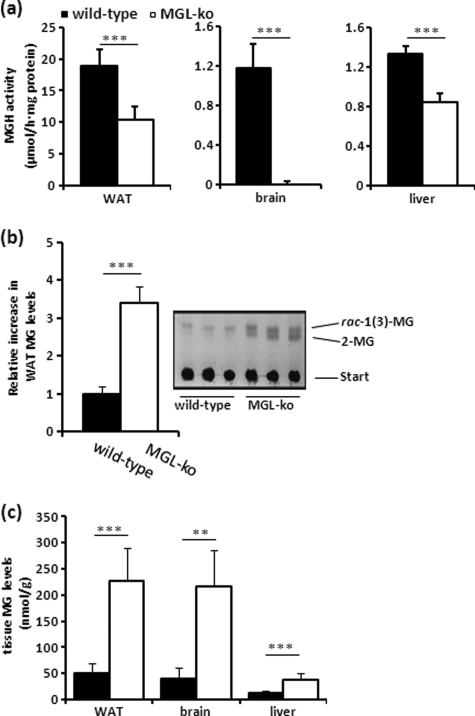Cat. #160871
MAGL Knockout mouse
Cat. #: 160871
Sub-type: Mouse
Availability: 8-10 weeks
Model: Knock-Out
This fee is applicable only for non-profit organisations. If you are a for-profit organisation or a researcher working on commercially-sponsored academic research, you will need to contact our licensing team for a commercial use license.
Contributor
Inventor: Robert Zimmermann ; Franz Radner
Institute: University of Graz
Tool Details
*FOR RESEARCH USE ONLY (for other uses, please contact the licensing team)
- Tool name: MAGL Knockout mouse
- Alternate name: MGL, Mgll, Magl
- Research fields: Cell signaling and signal transduction;Metabolism
- Tool sub type: Mouse
- Model: Knock-Out
- Conditional: No
- Description: Useful model to study MAGL-deficiency. Animals might be useful for studies, e.g. on energy metabolism or endocannabinoid signalling.
- Genetic background: These mice were generated using HM1-ES cells. ES cell clones were injected into C57BL/6J blastocysts to enable coat colour selection of the chimeras. Mice were subsequently backcrossed to C57BL/6J (âĽÂ 10 generations). When kept as a homozygous colony, mice are backcrossed regularly to C57BL/6J to avoid generation of subpopulations.
- Phenotype: These mice display a mildly attenuated peripheral lipolysis, and are resistant to diet-induced insulin resistance and hepatic steatosis. Further, these mice display a desensitization of intestinal cannabinoid receptor type 1, which leads to accelerated colonic propulsion.
- Zygosity: Homozygous
- Strain: C57BL/6J
- Production details: A floxed neomycin resistance cassette was inserted upstream of exon 3. An additional loxP site was inserted downstream of exon 4. Cre-mediated recombination removed Mgll exon 3 and 4 and the selection cassette. Further details are available upon request
- Breeding information: Good breeder. Homozygous mice may be bred together to maintain a live colony.
Target Details
- Target: Monoglyceride lipase; monoacyl glycerol lipase
Related Tools
- Related tools: MAGL-Flox mouse
References
- 26075589
- Taschler et al. 2011. J Biol Chem. 286(20):17467-77. PMID: 21454566.




